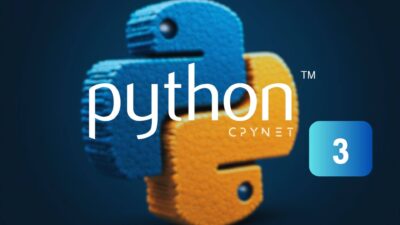Python stands out as one of the most popular and powerful programming languages today. Developed by Guido van Rossum in the late 1980s, Python is known for its simplicity and readability. It is widely used in data science, artificial intelligence, web development, automation, and more.
Python’s easily understandable and flexible syntax makes it an ideal language for beginners, while its powerful libraries and frameworks provide expert programmers with impressive options. So, what makes Python so special?
History and Development of Python
The foundation of Python was laid in 1989 by Guido van Rossum at a research center in Amsterdam. Van Rossum aimed to create a language with a focus on readability, favoring simplicity over complex structures. Python is named after the British comedy group Monty Python, symbolizing the language’s creative and flexible nature.
Key Features of Python
- Simple and Readable: Python has a very simple syntax compared to many other programming languages, making it easier to learn and understand.
- Cross-Platform: Python works across multiple operating systems, including Windows, MacOS, and Linux.
- Extensive Library Support: From data science to web development and artificial intelligence, Python offers a vast range of libraries.
- Community Support: Python has a large global community that continually develops new tools, libraries, and resources.
- Versatile: Python is a multi-purpose language used in web development, game development, data analytics, artificial intelligence, and more.
Advantages and Disadvantages of Python
Advantages:
- Simple structure for faster learning and application.
- Strong community support provides easy access to various resources and libraries.
- Broad library support makes it suitable for a wide range of applications.
Disadvantages:
- It can run slower compared to other languages.
- Limited usage in mobile app development.
Where is Python Used?
1. Data Science and Analytics: Python is highly popular for data analysis and scientific calculations. Libraries like Pandas, NumPy, and Matplotlib make data processing, analysis, and visualization easy.
2. Artificial Intelligence and Machine Learning: Python is a preferred language for developing machine learning models with powerful libraries like TensorFlow, PyTorch, and sci-kit-learn.
3. Web Development: Python is widely used in web application development with frameworks like Django and Flask.
4. Automation and Scripting: Python is preferred in automation projects, offering simple scripts to save time.
5. Game Development: With libraries like Pygame, Python can be used to develop 2D games.
Python Libraries and Frameworks
- NumPy and Pandas: Used for data analytics and scientific calculations.
- Django and Flask: Frameworks for web development.
- TensorFlow and PyTorch: Powerful tools for machine learning and artificial intelligence projects.
- Beautiful Soup and Scrapy: Used for web scraping.
- Matplotlib and Seaborn: Data visualization libraries.
How to Get Started with Python?
- Download Python: The first step is to download Python to your computer. You can download the latest version from the official Python website.
- Choose an Editor: Popular editors for Python include Visual Studio Code, PyCharm, and Jupyter Notebook.
- First Project: Starting with a simple “Hello, World!” program is an ideal step to learn the basic structure of the language.
- Practice with Projects: Working on simple projects in Python accelerates the learning process.
Conclusion
Python has become one of the most popular programming languages due to its simple structure, extensive library support, and versatility. You can develop projects in data science, artificial intelligence, web development, and more with Python.
Learning Python will open many doors in today’s job market and set you apart in the tech field.





